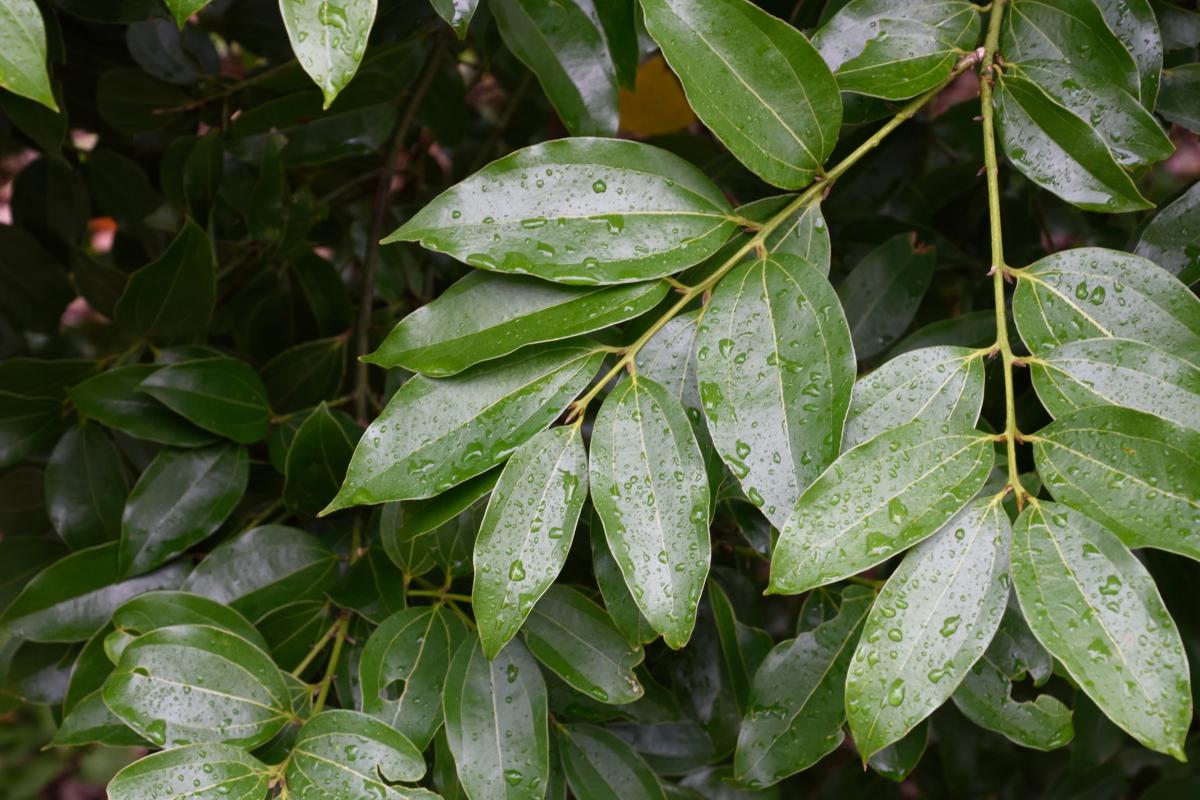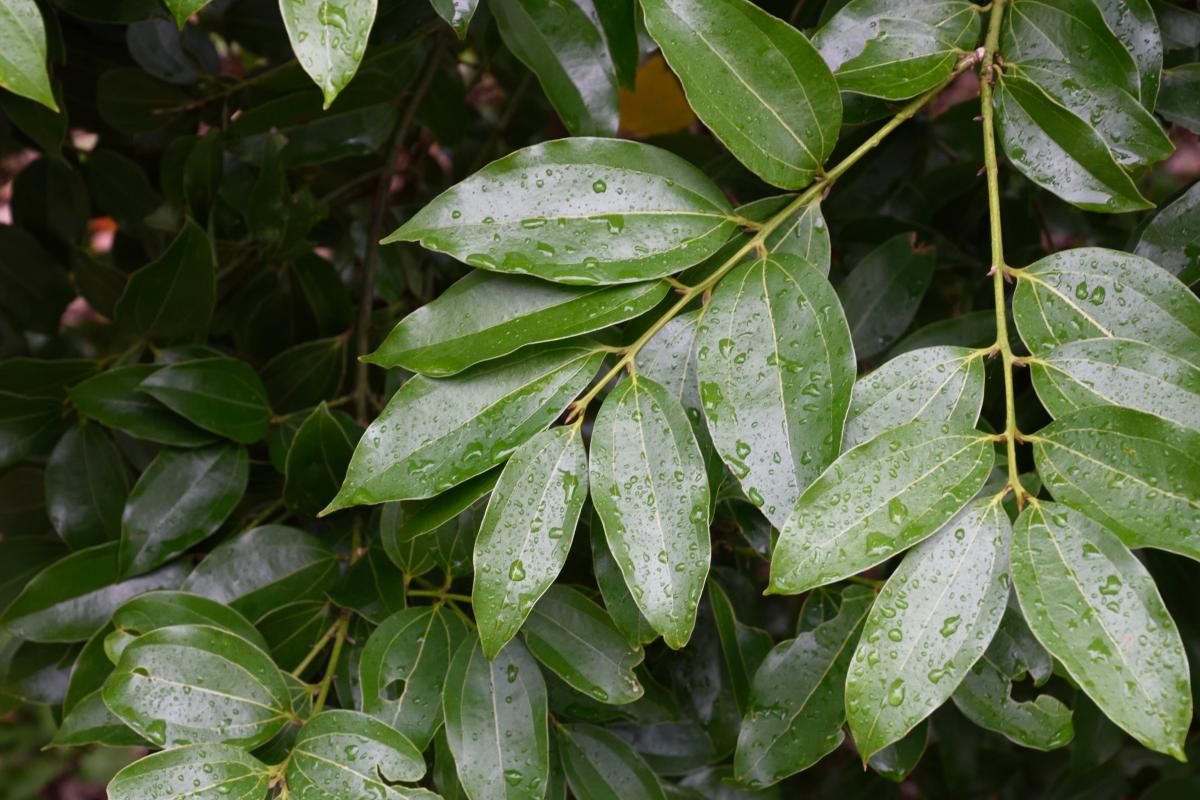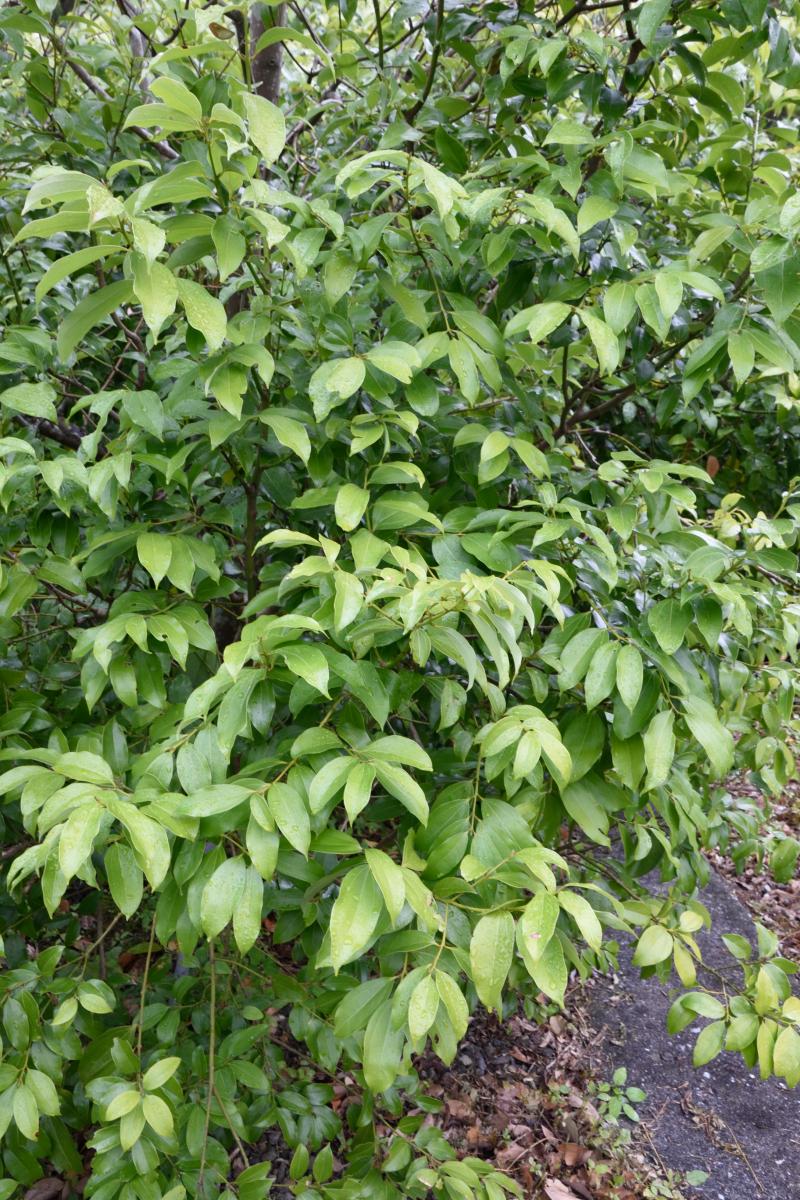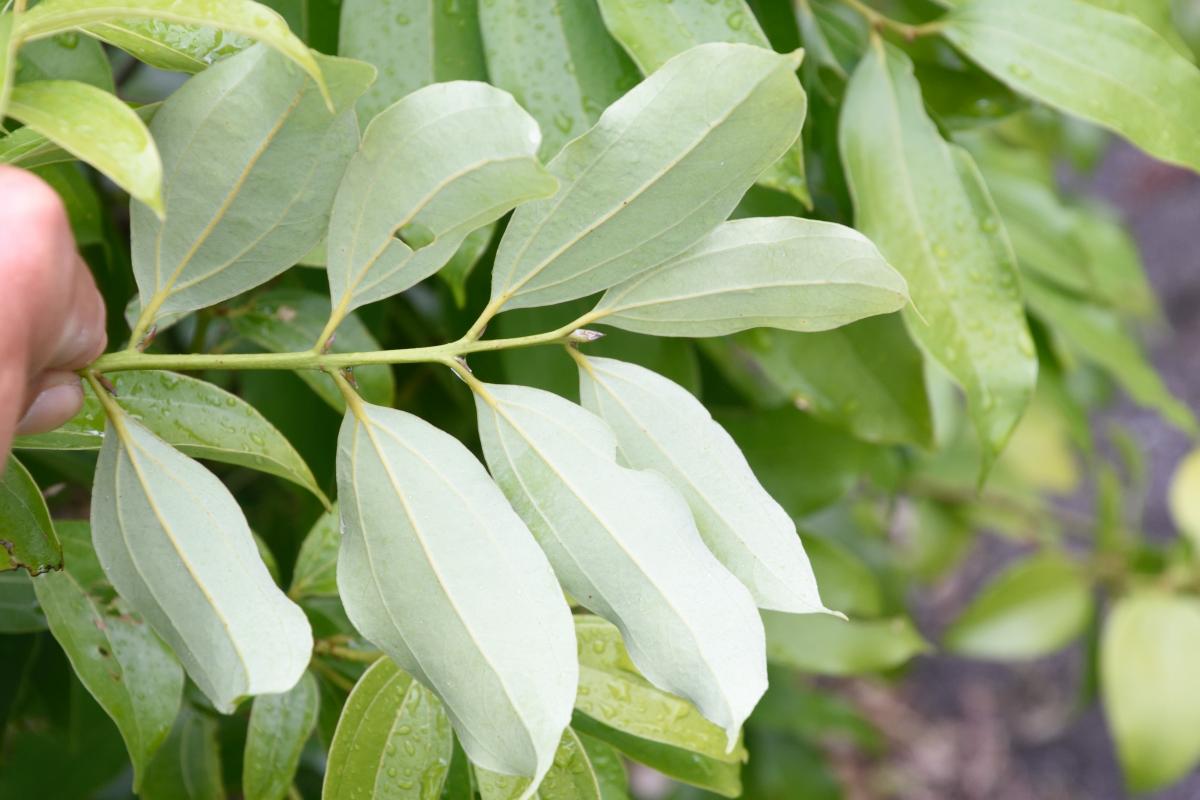樟科
學名:Cinnamomum osmophloeum Kaneh.
英名:Pseudo Cinnamomum、Indigenous Cinnamon
別名:山肉桂、臺灣肉桂、臺灣土玉桂、假肉桂
土肉桂是臺灣特有種常綠喬木,分佈臺灣全島中、低海拔山區。植株特徵與陰香相似,較大的不同處,在於土肉桂的葉背白綠色。它的根及葉含有豐富的肉桂醛,香氣與肉桂相近,可作為肉桂的替代品。根、葉可以應用在食材、藥材、芳香等保健產品,尤其萃取精油的用途更廣,可為食材賦香、製作保養用品,也可以直接咀嚼葉片食用。
Cinnamon plants are native to southern China to Southeast Asia, while Pseudo Cinnamomum is an evergreen tree endemic to Taiwan, mainly distributed in the middle and low altitude mountainous areas of Taiwan. The roots and leaves contain more cinnamaldehyde than that of imported cinnamon products. With similar aroma of cinnamon, it can serve as a substitute of cinnamon. The roots and leaves can be used in food, medicinal, aromatic and other health products, especially the use of essential oils is more versatile, such as adding scent for food ingredients, making skin care products or directly consumed by chewing the leaves.
樟屬常綠喬木,臺灣特有種,分佈臺灣中、低海拔山區。小枝細長綠色。薄革質卵圓狀披針形葉互生三出脈。新葉紅色,葉背灰白色。聚繖狀圓錐花序腋生,白色花瓣6枚。核果卵圓形,成熟紫黑色。開花春季,結果夏季。
An evergreen tree in the genus Cinnamomum, endemic to Taiwan, distributed in the middle and low altitude mountains in Taiwan. Branchlets are slender and green. Thin leathery ovate-elliptic lanceolate leaves are alternate with triple nerves. Young leaves are red and grayish white on the back. Cymose panicle axillary with 6 white petals. It produces drupes which is oval-shaped and ripe purple black. Flowering in spring and fruiting in summer.
適合全日照溫暖環境,幼樹略具耐陰性。適合酸性土壤,土壤應具有保水力。每季施用一次長效性肥料。修剪樹冠內的細弱枝與不良枝為主。繁殖可使用播種、空中壓條、扦插與嫁接法。
Suitable for full sun in warm environment, saplings are slightly shade tolerant. Grow well in acidic and water-retained soils. Apply long-active fertilizers once every season. Pruning the weak and defective branches in the crown. Seeding, air layering, cuttings and grafting are used to propagate.
樹冠濃蔭密佈,是良好的遮蔭樹。樹皮可以替代肉桂,可直接採葉片嚼食或泡茶、浸酒飲用。葉片提取的精油,具有芳香、殺菌與增甜等功效,可添加於清潔用品與食品中。
The dense crown makes it a great shade tree. The bark can be a substitute of cinnamon and the leaf can be directly used to chew, brew tea, soak in wine and drink. The essential oil extracted from the leaves has the effects of aroma, sterilization and sweetening, and can be added into cleaning products and foods.




